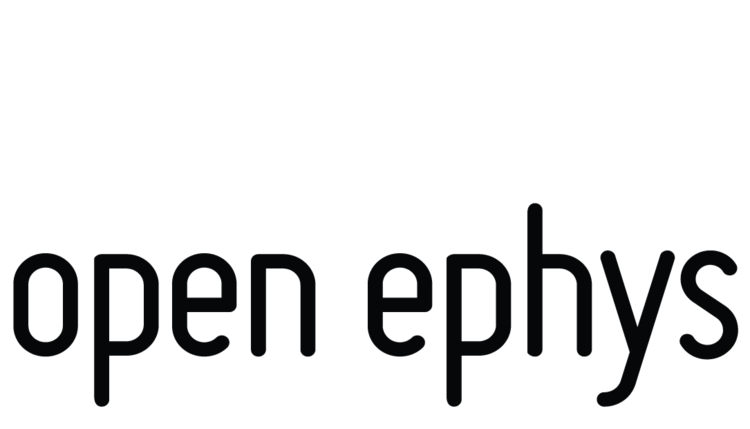The new Open Ephys website is live
We recommend that everyone check out the latest iteration of open-ephys.org, which has been public since Sunday night. Almost every element of the site has been rewritten and redesigned. We wanted to make the site as informative as possible with respect to the goals of our initiative. In addition to the tools we showcased on the original site, we now include pages on hardware and software designed outside of MIT: the Array Drive from the University of Maryland, the Puggle from Georgia Tech, the Pulse Pal from Cold Spring Harbor Laboratory, and Bonsai software from the Champalimaud Institute. We hope to turn open-ephys.org into a hub for promoting and distributing tools for electrophysiology. With the new site design, it's easier for visitors to browse through the range of tools that we feature.
If you have any suggestions about improving the site, or if you made a contribution and we haven't added your name to the "People" page yet, please get in touch! We've also made it even simpler to sign up for our newsletter, so be sure to spread the word to your friends and colleagues.
A new software update has been released
We recently released version 0.3.2 of the Open Ephys GUI. We've added a number of useful features:
Online spike sorting. Using the "Spike Sorter" module to detect spike events allows you to extract clusters online using manual box-based or PCA-based sorting. Cluster labels will be saved to disk along with the spike waveforms, and other processing modules can take advantage of this information when responding to incoming spikes. The Spike Sorter updates the functionality of the "Spike Detector" module, but the latter module remains in the software so people can continue using it. Many thanks to Shay Ohayon, now at MIT, who contributed most of the code for the Spike Sorter module.
Recording in HDF5-based Kwik format. We've been wanting to switch over to an HDF5-based data format for a long time. HDF5 offers many advantages over simple binary formats, the most important being dramatically reduced delays and more efficient memory use when loading data for analysis. When we found out that the Harris Lab at UCL was developing a general-purpose HDF5 format to use with their KlustaSuite of spike-sorting software, we decided to adopt this for Open Ephys as well. We want to support the proliferation of open standards for neuroscience, and many people will find it useful to save data that be immediately loaded into the KlustaSuite pipeline. Users still have the option to save their data in the original Open Ephys binary format if they like. As an added bonus, the source code for saving data has been modularized to make it easier to add new formats in the future. Thanks to Aarón Cuevas López, our core technical support person, for implementing this update.
Saving timestamped strings. Often, it's useful to be able to annotate your recordings with messages that a human can read. This is now possible in the GUI, using the new widget at the bottom of the acquisition window. Just type your message and hit "save," and your text will be saved along with a corresponding timestamp.
These are just a few examples of the upgrades we've implemented in the latest version of the software. We recommend that everyone either download the binaries or compile their own version from source. If you find any bugs, or have additional feature requests, don't hesitate to open a new issue on GitHub.
Society for Neuroscience meetup
If you'll be at the Society for Neuroscience conference next month, we encourage you to attend the official Open Ephys meetup on Monday the 17th. It's happening between 6:30 and 8:00 pm in Room 209A in the convention center. We'll talk a bit about the future directions of our initiative, but we mainly want to take the opportunity to bring together users and developers that may have only interacted virtually thus far. We are not presenting a poster this year, so this will be the best chance to meet the people behind Open Ephys and hear about what we've been up to. Of course, if you can't make it to the meetup, we're happy to set up a meeting at another time.
Other updates
We now have a mailing list/forum to help our users better access the community knowledge base. Sign up here to subscribe to emails sent to open-ephys@googlegroups.com. If you're a regular user of our software or hardware, we strongly encourage you to sign up.
We've added the first Python modules to our analysis-tools repository, as well as code for converting Open Ephys data to files that can be used by Plexon's Offline Sorter. This code has yet to be thoroughly tested, so we'd love for any users familiar with Python or Offline Sorter to download it and try it out.
Finally, many of you have asked about when we'll be selling the next round of Open Ephys acquisition boards. We're eager to get the store up and running, but we're still waiting for more stock to arrive. We'll send out an update via this newsletter as soon as they become available (hopefully by the end of next month). The good news is that our test run of manufacturing with CircuitHub went really well. If you want to get your hands on a board as soon as possible, you can now order fully assembled acquisition board PCBs via this link. You'll have to order an FPGA separately, and some simple assembly is required, but all the necessary instructions can be found on our wiki.
Until next time,
The Open Ephys Team
